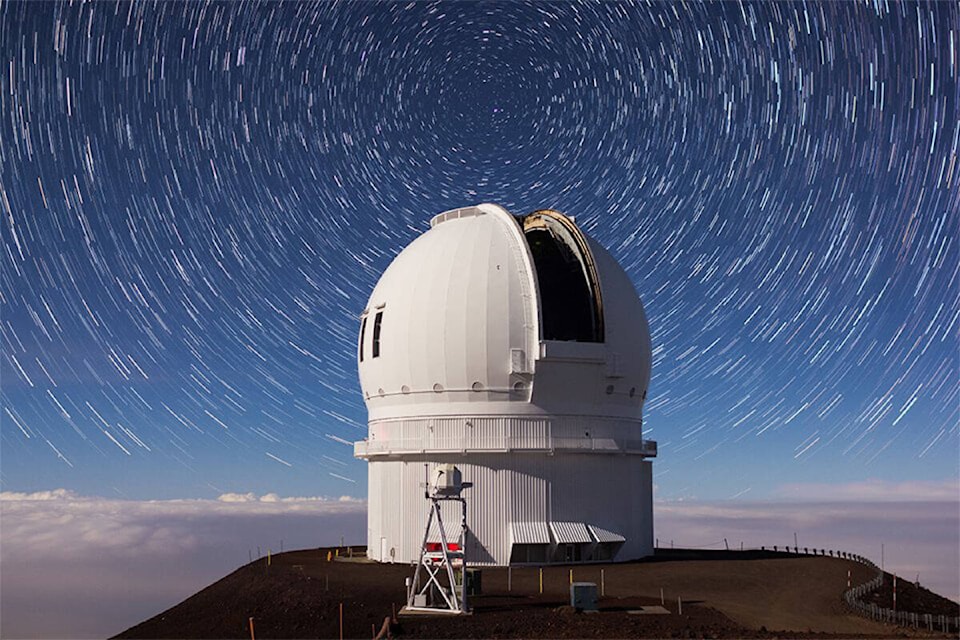An international team of scientists led by University of Victoria astronomers have discovered an ancient group of stars orbiting our own galaxy.
The newly discovered satellite consists of about 60 stars spread over a volume of about 10 light-years across, which is minute compared to the Milky Way galaxy, which contains over 10 billion stars.
“It is either the faintest ancient star cluster known to date, or the faintest and closest known dwarf galaxy ever discovered,” said Simon Smith, a PhD student at the university and the lead author of the recent Astrophysical Journal paper describing the find, in a news release. “Being able to detect such a tiny system, with only about 60 stars, speaks for the quality of the data that the team had to work with.”
READ MORE: ‘Dead star’ reputation of white dwarfs challenged by UVic astronomer’s study
The data came from the ultraviolet near-infrared optical northern survey at the Canada-France-Hawaii telescope with follow-up data from the Keck Observatory. The researchers are a team from UVic, Yale, the National Research Council, the Herzberg Astronomy and Astrophysics Research Centre and members from Ontario, France, Hawaii, and Germany
According to the release, the object, named UMa3, was likely born in the early days of the universe, as it consists of stars that appear to be more than 10 billion years old. The existence of faint, ancient, dark matter-dominated satellites is a cornerstone prediction of the cold dark matter theory, the leading theory for the origin of structure in the universe and identifying dark matter in this particular collection of stars would be strong support for that theory.
Smith says the presence of dark matter is highly likely, because the satellite’s orbit takes it through the inner regions of the Milky Way, where gravitational “tidal” forces are strongest and without the binding presence of large amounts of dark matter, the satellite would not have survived long on its current orbit.
“This is a momentous discovery, and fully consistent with a long-standing prediction of the cold dark matter theory,” Julio Navarro, a UVic astronomer, noted in the release. “This may be the faintest galaxy known, and also one of the most dark matter-dominated. It’s hard to see what else its unique set of properties might mean.”
Read more: Saanich father-son duo chasing solar eclipse to Texas
